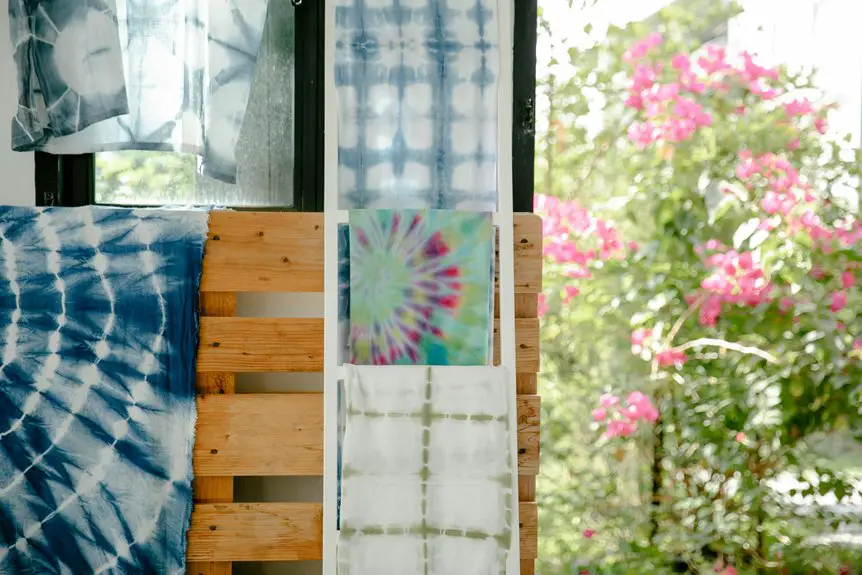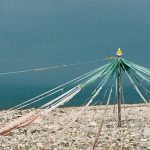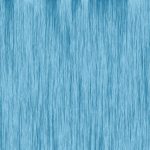If you’re curious about Plangi and Tritik, these Indonesian resist dyeing techniques create vibrant, symbolic patterns on fabric by tying and stitching, respectively. Plangi uses rubber bands to form bold, multicolored designs with natural dyes like indigo, while Tritik stitches fine, dotted lines often in monochrome. Both reflect unique cultural stories and regional identities. As you explore further, you’ll uncover their traditional symbolism, materials, and how they’re crafted into artful textiles.
Table of Contents
Key Takeaways
- Plangi and Tritik are traditional Indonesian resist dyeing techniques creating patterns by preventing dye absorption in specific fabric areas.
- Plangi uses tying methods with rubber bands, producing bold, multicolored patterns reflecting coastal cultural ties.
- Tritik employs intricate stitching with cotton threads, resulting in fine, monochrome dotted designs linked to inland spiritual symbolism.
- Both techniques use natural fabrics like cotton or silk and natural dyes such as indigo, enhancing vibrant, eco-friendly textiles.
- Patterns in Plangi and Tritik carry cultural symbolism, representing identity, spirituality, and social status across Indonesian regions.
The Origins of Plangi and Tritik in Indonesian Culture
Although many people admire Indonesian textiles for their vibrant patterns, not everyone knows that Plangi and Tritik resist dyeing techniques have deep cultural roots.
When you explore these techniques, you’ll discover they’re more than just decorative methods—they’re tied to traditions passed down through generations.
Plangi originated in coastal areas, reflecting the community’s connection to the sea and nature. Tritik, on the other hand, comes from inland regions, symbolizing spiritual beliefs and social status.
Plangi and Tritik designs reveal coastal ties and inland spiritual traditions through their vibrant patterns.
As you learn about these origins, you’ll see how each pattern tells a story, embodying local identity and history.
Understanding Resist Dyeing Techniques
When you look closely at Plangi and Tritik fabrics, you’ll notice their unique patterns come from careful resist dyeing techniques that control how dye interacts with the cloth. You create designs by preventing dye from reaching specific areas, forming distinct shapes and lines. Plangi often uses tying methods, while Tritik focuses on stitching patterns. Both rely on manipulating fabric tension to resist dye penetration.
| Technique | Method | Resulting Effect |
|---|---|---|
| Tying | Binding fabric | Circular, organic |
| Stitching | Sewing patterns | Linear, precise |
| Folding | Creasing cloth | Repetitive, geometric |
| Clamping | Pressing shapes | Sharp, defined |
| Waxing | Applying wax | Detailed, intricate |
You control the dye’s spread, making each piece uniquely vibrant.
Materials Used in Plangi and Tritik
Both Plangi and Tritik rely on natural materials that enhance the dyeing process and bring out vibrant colors.
You’ll start with cotton or silk fabric, chosen for their ability to absorb dyes well. To create resist patterns, you’ll use threads or rubber bands—cotton threads for Tritik to bind fabric tightly, and rubber bands or strings for Plangi to section off areas.
The dyes themselves are often derived from natural sources like indigo, teak leaves, or henna, offering deep, lasting hues. You’ll also need basic tools such as wooden blocks or bamboo sticks to help secure bindings.
Using these materials guarantees your fabric develops sharp contrasts and intricate designs unique to Indonesian resist dyeing traditions.
Step-by-Step Process of Creating Plangi Fabric
With your materials ready—cotton or silk fabric, rubber bands, and natural dyes—you can begin the Plangi dyeing process.
First, fold or twist the fabric to create patterns, then secure it tightly with rubber bands in sections where you want to resist the dye.
Next, prepare your natural dye bath, heating it gently to extract rich colors. Submerge the bound fabric into the dye, letting it soak until it reaches your desired shade.
Gently heat your natural dye bath and soak the bound fabric until the perfect color develops.
After dyeing, carefully remove the fabric and rinse it under cold water to stop the dyeing process.
Once dry, remove the rubber bands to reveal the unique, vibrant patterns created by the resisted areas.
Finally, wash and dry the fabric thoroughly to set the colors and complete your Plangi piece.
How Tritik Designs Are Made
Discovering how Tritik designs come to life reveals a fascinating blend of skill and tradition.
You begin by carefully stitching patterns onto the fabric using thick thread. These stitches act as a physical barrier that resists dye penetration, creating the distinctive dotted or linear designs.
After stitching, you tightly pull the threads to gather the fabric, ensuring the dye won’t seep into the stitched areas. Next, you immerse the fabric in dye baths, often repeating the process with different colors for layered effects.
Once dyed, you remove the threads to reveal the intricate patterns formed by the untouched fabric beneath. This hands-on method demands precision and patience, connecting you directly with centuries-old Indonesian artistry that transforms simple cloth into vibrant, meaningful designs.
Differences Between Plangi and Tritik
You’ll notice that Plangi and Tritik use different techniques to create their unique patterns.
Plangi relies on tying fabric in specific ways before dyeing, while Tritik involves intricate stitching.
These methods lead to distinct visual characteristics you can easily spot.
Techniques Used
Understanding the techniques behind Plangi and Tritik helps you appreciate how each method creates unique patterns through resist dyeing.
With Plangi, you tie fabric sections tightly using string or rubber bands, forming distinct resist areas. When dipped in dye, these tied parts resist color, resulting in bold, circular patterns.
Tritik, on the other hand, involves stitching intricate designs with thread, then pulling the stitches tight before dyeing. The thread-bound areas resist dye penetration, producing delicate, detailed motifs.
You’ll notice Plangi’s technique relies on mechanical tying, making it faster and more spontaneous. Tritik demands more precision and patience due to the hand-sewn bindings.
Both methods involve multiple dyeing and tying or stitching rounds to build complexity, but their contrasting approaches define their signature looks.
Visual Characteristics
Patterns define the visual identity of both Plangi and Tritik, yet each displays strikingly different characteristics. When you look at Plangi, you’ll notice vibrant, irregular patterns created by folding and clamping the fabric. Tritik, on the other hand, features precise, dotted lines formed by binding sections with thread before dyeing.
Here’s a quick comparison to help you spot the differences:
| Feature | Plangi |
|---|---|
| Pattern Style | Bold, irregular |
| Color | Multicolored, vivid |
| Technique Result | Clamped shapes, uneven edges |
| Feature | Tritik |
| Pattern Style | Fine, dotted lines |
| Color | Typically monochrome |
| Technique Result | Thread-bound, sharp edges |
You’ll find Plangi more spontaneous, while Tritik appears more deliberate and detailed.
Symbolism and Meaning Behind Patterns
When you look closely at Plangi and Tritik patterns, you’ll notice each motif carries deep cultural significance.
These traditional symbols often tell stories or represent beliefs important to Indonesian communities.
Understanding their meanings helps you appreciate the art beyond its beauty.
Cultural Significance of Motifs
Motifs in Plangi and Tritik aren’t just decorative—they carry deep cultural meanings that connect you to Indonesian heritage.
When you look closely, each pattern tells a story that reflects local beliefs, social values, and community identity. These motifs often symbolize harmony with nature, spiritual protection, or social status.
As you wear or create these textiles, you participate in a tradition that honors ancestors and reinforces cultural pride. Recognizing these motifs helps you appreciate the craftsmanship and the cultural context behind every piece.
By understanding their significance, you engage with a vibrant narrative that has been passed down through generations, making each motif a living symbol of Indonesia’s diverse cultural landscape.
This connection enriches your experience beyond mere aesthetics.
Traditional Symbolic Meanings
Although you might first notice their beauty, the designs in Plangi and Tritik carry layers of traditional symbolism that convey stories, beliefs, and values unique to Indonesian culture. Each pattern isn’t just decoration; it represents identity, spirituality, and social status. When you wear or see these textiles, you’re engaging with a rich cultural narrative.
| Pattern | Symbolism | Meaning |
|---|---|---|
| Kawung | Palm fruit motif | Purity and renewal |
| Ceplok | Geometric shapes | Harmony and balance |
| Lereng | Diagonal lines | Protection and strength |
Understanding these symbols helps you appreciate how resist dyeing blends art with meaningful tradition.
Regional Variations Across Indonesia
Because Indonesia spans thousands of islands, you’ll find distinct regional styles in plangi and tritik resist dyeing that reflect local culture and environment.
Each area adds its own flair, influenced by history, climate, and available materials.
When exploring these variations, pay close attention to:
- Java: Known for intricate patterns and deep indigo hues, often symbolizing spirituality and status.
- Bali: Features vibrant colors and motifs inspired by nature and mythology.
- Sumatra: Displays bold geometric designs with earthy tones, reflecting tribal traditions.
Contemporary Applications of Plangi and Tritik
You’ll find Plangi and Tritik patterns popping up in modern fashion, adding unique flair to contemporary designs.
These techniques are also inspiring interior designers who want authentic, sustainable looks for their spaces.
Plus, using traditional resist dyeing supports eco-friendly textile practices that you can feel good about.
Modern Fashion Trends
When you explore modern fashion, you’ll find that Plangi and Tritik resist dyeing techniques have moved beyond traditional uses to inspire contemporary designers worldwide.
You’ll notice these methods add unique textures and vibrant patterns to everyday wear, making garments stand out. Designers incorporate these techniques to celebrate cultural heritage while pushing creative boundaries.
Here’s how Plangi and Tritik influence modern fashion:
- They introduce eco-friendly, handcrafted elements that resonate with sustainable fashion trends.
- They provide distinctive, artisanal patterns that elevate casual and formal attire alike.
- They allow you to wear a piece of living tradition, connecting you to Indonesia’s rich textile history.
Interior Design Uses
Although traditionally used in clothing, Plangi and Tritik resist dyeing techniques have found a vibrant new life in interior design. You can incorporate these intricate patterns into cushions, curtains, and upholstery to add a unique, cultural touch to your living spaces.
Their bold colors and geometric designs bring warmth and personality, making your home stand out. Plangi’s bright, tie-dyed effects contrast beautifully with Tritik’s detailed, stitched motifs, allowing you to mix and match styles for a dynamic look.
Whether you’re aiming for a bohemian vibe or a sophisticated ethnic accent, these textiles offer versatility. By choosing Plangi and Tritik in your decor, you not only enhance aesthetics but also celebrate Indonesian artistry in your everyday environment.
Sustainable Textile Practices
Because Plangi and Tritik rely on natural materials and time-honored techniques, they fit perfectly into sustainable textile practices. When you choose these fabrics, you support eco-friendly processes that reduce waste and pollution.
Plus, you honor artisans preserving cultural heritage through slow, mindful production.
Here’s why embracing Plangi and Tritik benefits sustainability:
- They use natural dyes and fibers, minimizing chemical impact on the environment.
- The resist-dyeing methods require less water compared to conventional textile dyeing.
- Handcrafted techniques promote fair trade and empower local communities economically.
Preserving Traditional Indonesian Textile Arts
To keep the rich heritage of Indonesian resist dyeing alive, communities and artisans actively pass down techniques like plangi and tritik to new generations.
You’ll find local workshops where elders teach these crafts, ensuring skills aren’t lost. Cultural festivals also spotlight these textiles, raising awareness and appreciation.
When you support artisans by buying authentic pieces, you help sustain their livelihoods and encourage continued practice.
Educational programs often integrate traditional dyeing methods, connecting younger people with their culture.
By valuing these textiles, you participate in preserving unique patterns and stories woven into every fabric.
Staying engaged with the community and understanding the significance behind plangi and tritik empowers you to protect these arts for years to come.
Tips for Caring for Plangi and Tritik Textiles
How can you guarantee your plangi and tritik textiles stay vibrant and durable over time? Caring for these delicate fabrics requires gentle handling and mindful maintenance. Here are some essential tips:
- Hand wash with cold water: Use mild detergent and avoid harsh chemicals to prevent color fading and fabric damage.
- Dry in shade: Direct sunlight can weaken fibers and dull colors, so air-dry your textiles in a shaded, well-ventilated space.
- Store properly: Keep your textiles in a cool, dry place away from moisture and insects. Wrapping them in cotton cloth helps preserve their texture and design.
Frequently Asked Questions
Can Plangi and Tritik Fabrics Be Machine Washed?
Imagine you’ve just bought a vibrant Plangi scarf; you shouldn’t machine wash it. Instead, hand wash with cold water to preserve colors and patterns, avoiding fading or damage typical in machine cycles.
Where Can I Buy Authentic Plangi and Tritik Textiles Internationally?
You can buy authentic plangi and tritik textiles from specialty Indonesian craft shops online, Etsy, or international marketplaces. Look for sellers who provide provenance details to guarantee you’re getting genuine, hand-dyed fabrics directly from artisans.
Are There Modern Fashion Brands Using Plangi and Tritik Designs?
You’ll find modern fashion brands embracing plangi and tritik designs, blending tradition with contemporary style. They’re incorporating these vibrant textiles into clothing and accessories, letting you wear cultural heritage with a fresh, trendy twist.
How Long Does It Take to Complete a Plangi or Tritik Piece?
Think of crafting a plangi or tritik piece like baking a slow, layered cake—it can take days or even weeks. You’ll patiently tie, dye, and dry, ensuring each step adds vibrant depth and unique patterns.
What Are the Environmental Impacts of Plangi and Tritik Dyeing Methods?
You’ll find plangi and tritik dyeing uses natural dyes and minimal water, so it’s eco-friendly. They don’t rely on harsh chemicals, reducing pollution and waste, which helps protect the environment while preserving traditional art.
- Does Chiffon Fabric Stink - July 15, 2025
- Does Chiffon Fabric Affect the Economy - July 15, 2025
- Does Cotton Fabric Have a Nap - July 15, 2025







